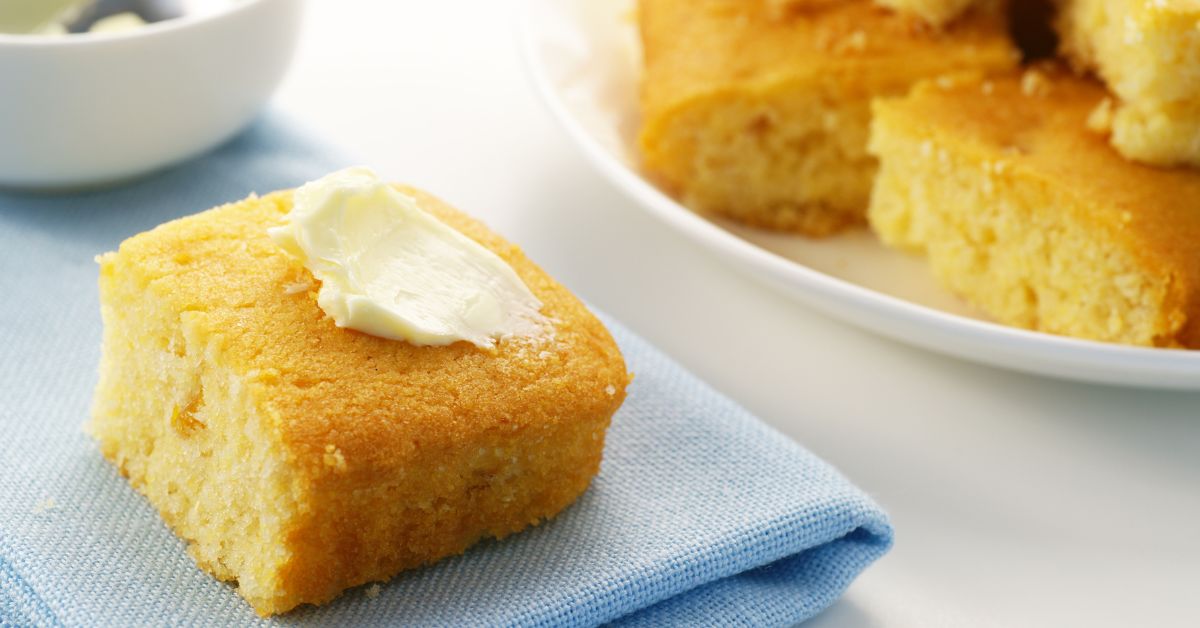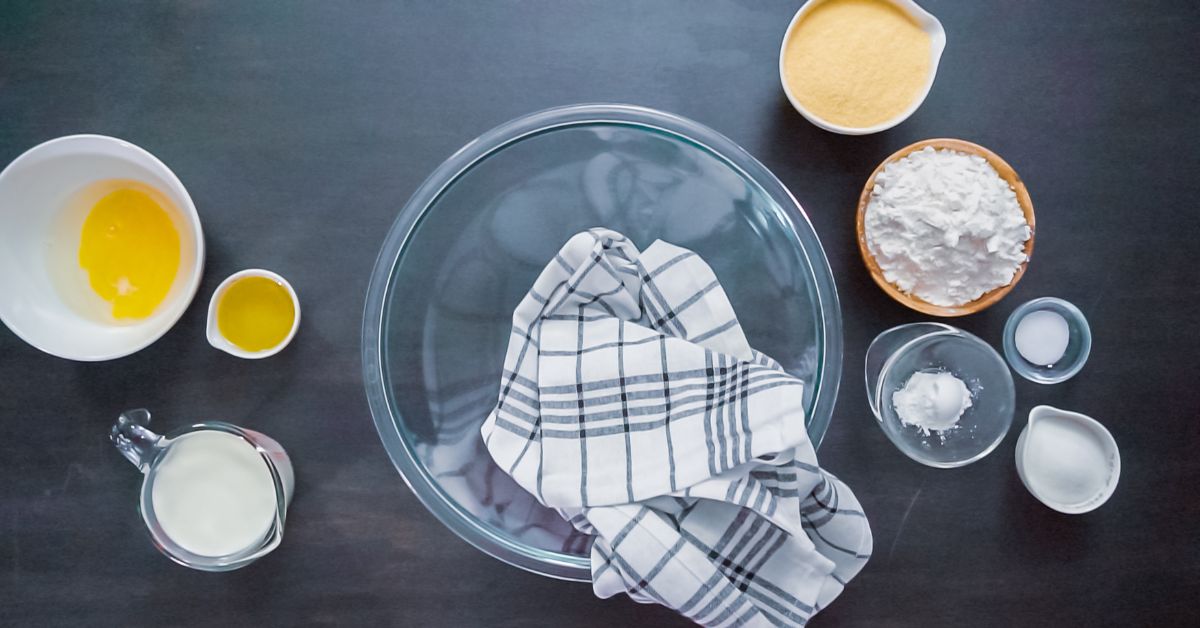Does Cornbread Rise? [ Tips Included ]

Cornbread is bread made with cornmeal and is one of the American South’s signature dishes. Being very tasty and very easy to make, cornbread has managed to make its way into other parts of the world. Today, there’s flat pan-made cornbread, puffy oven-baked cornbread, harder, softer, rougher, and gentler. Considering that you can see different kinds of cornbread, you must be asking yourself whether or not cornbread rises.
Cornbread rises while baking, but don’t expect it to double in size. There are different kinds of cornbread; some recipes call for a leavening agent, and some don’t. The recipes that include a leavening agent produce cornbread that rise, while the ones that don’t include a leavening agent result in a flat cornbread. The classic southern cornbread recipe requires a leavening agent.
In this article, I will discuss how to make your cornbread rise and how much it should be, and I will provide tips on making your cornbread as fluffy as possible.
How Much Does Cornbread Rise While Baking?
It rises approximately one-quarter of its pre-baking size. This is because cornbread is made with cornmeal and not with white flour.
Cornmeal is denser and rougher than white flour. In addition, white flour contains gluten which is extremely important for the dough to rise as it traps the air bubbles created by the leavening agent. The dough would not rise as much without gluten, which is the case with cornbread.
Because cornmeal is gluten-free, the air bubbles created with the leavening agent lose shape and integrity as the dough presses down on them. Therefore they cannot hold up for long, nor can the dough significantly rise. The air bubbles make a huge difference, making the dough softer and more tender.
The used leavening agent also plays a massive role in how much the cornbread will rise. The most commonly used leavening agents are baking soda and yeast. The yeast is not suitable for cornbread as it needs a while to activate, but baking soda alone cannot help the cornbread leaven much.
Therefore, you need a liquid that contains bacteria to trigger the leavening process. Most often, this ingredient is buttermilk. Thanks to the lacto bacteria contained in the buttermilk, the leavening process is triggered when the temperature increases, i.e., while baking.
If you are using Jiffy cornbread mix, you can expect it to rise just in the middle. Check it out in the image below.

Why Does Cornbread Rise?
Cornbread rises due to a chemical reaction due to the interaction of the leavening agent and the bacterial culture in the cornbread batter, triggered by the rising temperature.
The leavening agent, most often baking soda, interacts with the lacto bacteria from the buttermilk, which causes air bubbles to form. These air bubbles are filled with carbon dioxide that causes the batter to rise when baked.
However, since cornmeal doesn’t contain gluten, the batter falls heavy over the bubbles, causing them to decrease in number. Still, the chemical reaction between the baking soda and the buttermilk is strong enough to create a sort of spongy and airy consistency in the interior of the cornbread when it is done.
Because cornmeal is coarser than regular white flour, this leavening doesn’t result in a soft and airy bread like regular white bread, but it creates a significantly different result compared to cornbread made without a leavening agent.

How to Make Sure That Cornbread Doesn’t Rise Too Much?
Even though cornbread isn’t known as bread that rises very much, 25 to 30 % of its size is all there is; it can rise too much if you add too much baking powder or another leavening agent. Getting the leavening agent quantity just right is crucial for a high-quality cornbread.
The air pockets I mentioned earlier that are created inside the batter as a result of the chemical reaction triggered by the increased temperature are filled with carbon dioxide, and when there is too much of the leavening agent, these air bubbles are created very quickly.
Since the cornmeal is gluten-free, the dough isn’t as elastic as regular white flour dough; therefore, it can’t withstand the air bubbles created so quickly and so many. When this happens, the result is cornbread with a hollow center, where most bubbles create. The batter cannot hold the bubbles and starts falling down, which is why the center of the cornbread is flat.
The overrisen cornbread not only results in a flat center but also has a different taste. It still tastes good, but you can still feel that something is off. To avoid this, make sure you add the proper amount of leavening agent, mix the batter well, and watch out for the oven temperature; make sure it’s not too high and not too low.
How to Make Cornbread Rise Higher?
To make the cornbread rise higher, you need to make up for the role that gluten has in the high-rising white flour doughs, which is the stability and elasticity of the batter. The consistency of the cornbread should be liquid enough to pour and solid enough to bake, so thicker than pancakes and thinner than dough; therefore, making the batter too firm doesn’t work.
Instead of making the batter more solid, you should add buttermilk instead of water, making the batter denser and more elastic. You can also add one more egg for the same purpose. Also, in certain cases, if the batter is too thin, i.e., pancake-like, add more cornmeal to make it thicker.
I don’t recommend adding more leavening agents, as it will make the batter rise too much, lowering the cornbread’s quality.
How Do You Know When Cornbread Is Ready?
Cornbread doesn’t need long to bake, about 20 minutes. In addition to color, which clearly indicates whether the cornbread is ready or not, you should pay attention to the texture and do the toothpick test.
The color of a well-baked cornbread is light golden-brown, and you should see it slightly ruptured near the edges. When you do the toothpick test, make sure you poke the cornbread from all sides, but pay the closest attention to the middle, as that is the riskiest area.
When you pull out the toothpick, it should be clear of any dough remnants, which means that the cornbread is well-baked. If the toothpick has cornbread batter stuck to it, it means that you need to bake the cornbread for a few more minutes.
Does Cornbread Shrink When Cooling?
Cornbread doesn’t shrink when cooling, but rather it de-puffs. When you take it out of the oven, the cornbread tends to be bigger, and as it cools, it flattens a little bit. That’s a natural cooling process of all pastries, not just cornbread.
As the excess moisture evaporates from the bread while it’s cooling, gravity does its business, causing the cornbread to become a bit smaller than before. However, this shouldn’t be very obvious, and the difference between hot and cooled cornbread shouldn’t be very big.
When baked, cornbread is thick and stable, and its consistency tends to be dense. Therefore the so-called shrinking shouldn’t be that noticeable. If your cornbread shrinks or de-puffs to a greater extent, it is clear that you have done something wrong with the batter.
In this case, the cornbread either lacks cornmeal or lacks a leavening agent or other ingredients that trigger the leavening agent.
